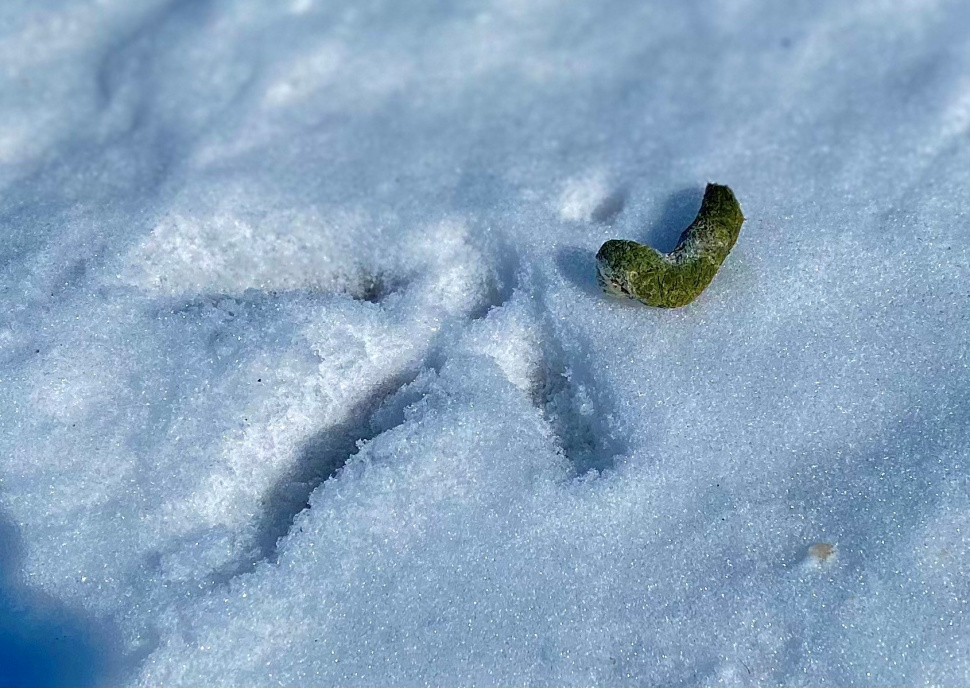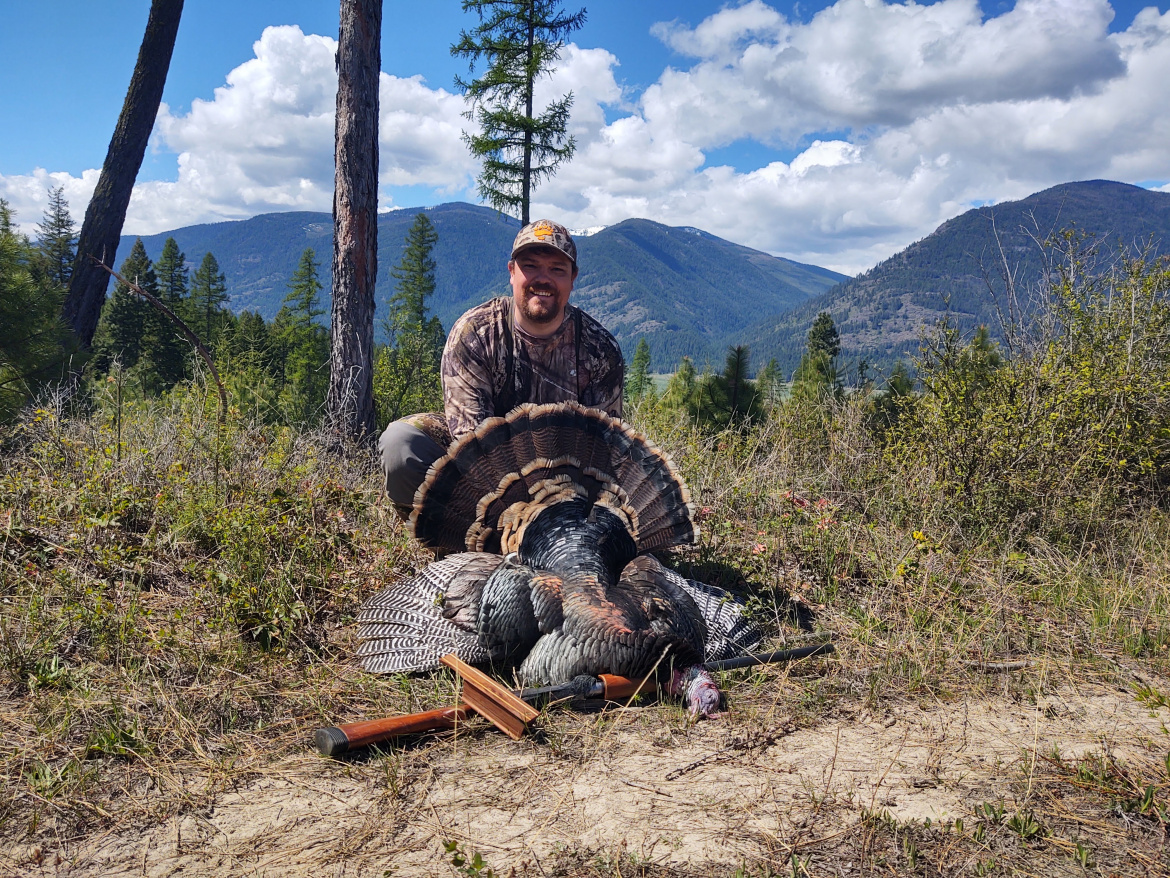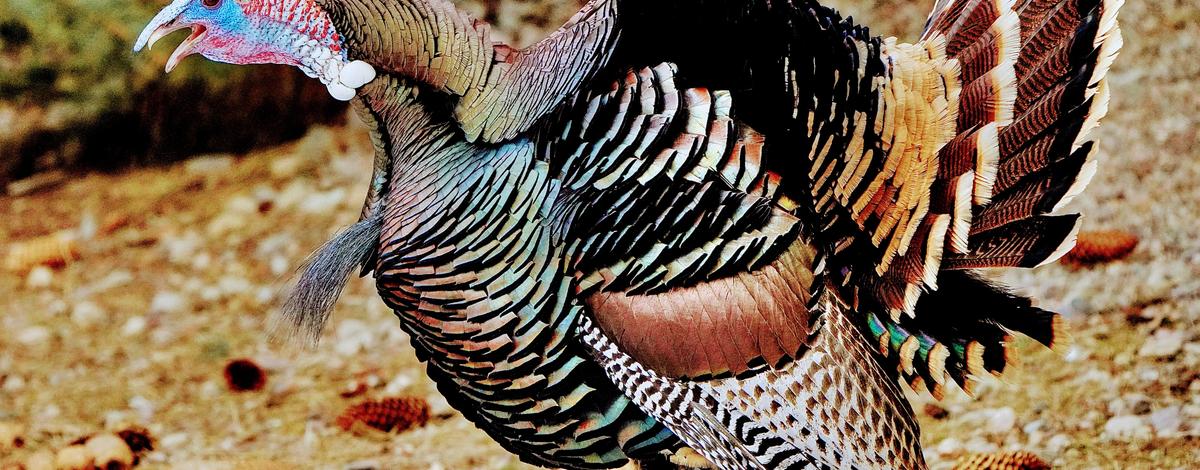Are you thinking about turkey hunting this spring? Not quite sure how to go about it? Outsmarting a gobbler is an enjoyable way to spend a beautiful spring day. Here are some tips to get you started on your turkey hunting adventure. General season hunts start April 15, and turkey season for youth hunters starts April 8.
To find out where go to the 2022-23 Idaho Upland Game, Turkey and Furbearer Seasons and Rules booklet.

• Diverse habitat is important. Turkeys can be found in many habitats around the state. They prefer to roost at night in large trees close to clearings with low brush and other ground cover. Gobblers like clearings where they can strut for interested hens.
• Scout before your hunt. You can’t harvest a bird if you don’t know where to find them. Ask a fellow hunter where they have gone turkey hunting in the past and look for turkey sign.
• Tracks are large, measuring 3 ¾ to 5 inches long and 4 to 5 ¼ inches wide.


• Scat is very distinctive. Gobblers have J-shaped, large droppings up to 3 inches long. Hens have droppings that are less than an inch and look like a twisted lump.
• Locate roosting trees. Once you have an idea of turkey locations, visit the area in late afternoon to locate roosting trees. Be still, quiet and listen for birds. Turkeys will often call as they approach a roosting tree. Mark the location on a map or GPS mapping program. Sit quietly until darkness falls then slip back to camp.

• Before daybreak the day of your hunt, sneak in close to the roosting tree, find a large tree to sit against and wait for the birds to fly down.
• Head to toe camouflage is recommended and blinds or camo netting can be handy. Turkeys have keen eyesight, excellent hearing and a paranoid nature, making them an enjoyable challenge to hunt. You should avoid wearing red, white, blue or orange. Not only will turkeys see you but so will other hunters looking for colorful turkey heads. You do not want to be the unintended target of another hunter.
• Learn some basic turkey calls. The cluck is a single note with 2 to 3 seconds between each note. Hens cluck when they are relaxed or content. The yelp is 3 to 8 notes long that turkeys make to locate other turkeys. Both calls are helpful to locate turkeys and bring them closer to your location. Stores sell many different types of calls. Mouth or diaphragm calls are often preferred because they are inexpensive, realistic and are hands-free so shotguns can be kept at the ready.

• Owl or crow calls are helpful in determining if turkeys are roosting in a particular tree. Toms often gobble when startled. Use locator calls sparingly. Turkeys can become desensitized if they hear a call too often.
• Choose a well-fitting shotgun with a full or extra-full choke. A shorter barrel can make it easier to maneuver through brush.
• Practice shooting your weapon before your hunt. Try out different loads for the tightest pattern. A minimum of 15 pellets in the head at 40 yards is generally a good tight pattern.

